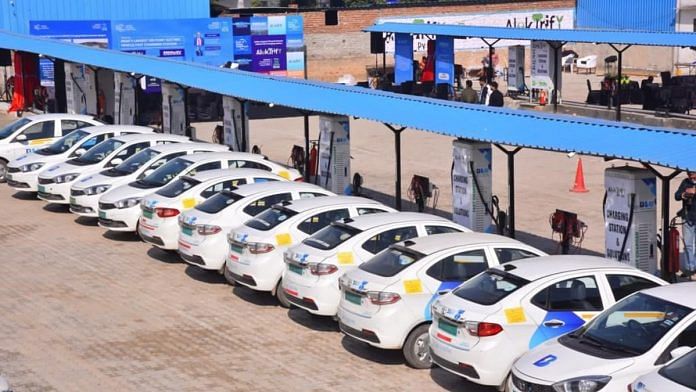If you are reading this on the day it was published, 9 September 2023 – it is World EV Day. I should be on my way to Pune to drive the updated Tata Nexon.ev, one of India’s most popular electric vehicles. You’ll read the review soon enough and I’m sure this vehicle will help Tata Motors cement their lead in electric passenger cars in India.
But recent news and my own experiences have taught me that while there is a significant push towards electric vehicles in India, there is still a long way to go. Let’s look at the news first.
The Chinese dominance
Multiple reports talk about just how much excess capacity China has built up in Lithium-Ion cell manufacturing. This is the standard playbook by China, build up massive capacity and then dump products across the world. It happened with steel, and it will almost certainly happen with Lithium-Ion cells, because not only does China control the manufacturing, this time round Chinese firms like CATL, BYD and Gotion also control the intellectual property. So much so that in the past few days, German luxury carmakers Audi, BMW and Mercedes-Benz have all announced tie-ups with Chinese cell and car companies.
There is no doubt the Indian government’s various schemes, particularly the Faster Adoption and Manufacturing of Electric Vehicles (FAME) have given an impetus to electric vehicles. But we are still a long way from properly manufacturing Lithium cells at the scale required to be competitive. So while FAME has helped create the demand, the supply side remains a problem.
And as for that demand, I still firmly believe that electric commercial vehicles that are used for local and city transport are not just feasible, they are necessary. There remains a massive opportunity for electric goods carriers and buses. Even for private two-wheelers, companies like Ather and Ola and now even the ‘Big 3’ of the two-wheeler world – Hero, Bajaj and TVS have shown that Indian firms can create great electric products. But you see, you’re not really taking an electric two-wheeler on a long-distance drive from Bengaluru to Hyderabad, so the range issues don’t really come into play.
But as I learned, yet again, with my long-term Hyundai IONIQ 5 review, long trips are a problem for passenger car EVs. I recently took the car to Agra for a family getaway and I was not tense about reaching as I reached with over 40 per cent charge remaining and I even found a charger near the hotel I was staying at. But the first charger, which worked at only 30kWh failed. Thankfully, there were two stations and I used the second one that worked. Here is the thing though, while I was not pressed for time, it took me close to ninety minutes to get 50 per cent charge. That is not fast, and while there are some 150-180kWh charging stations in India, including a new one at the Mercedes-Benz showroom in Gurugram, none of these super-fast chargers are on highways where one really needs them.
The economics of owning an electric car make sense only if you have a home charging set-up. And in a city, if you’re using a car for 50 km a day, the operating economics are unbeatable. The IONIQ 5, despite its Rs 50 lakh price tag has been superb inside Delhi-NCR; with over 500 km of range inside the city, thanks to a brilliant regeneration system, a single charge-up a week that would cost around Rs 500 is all I’d need compared to the Rs 5,000 I’d spend on petrol on a comparable Hyundai Tucson.
Also read: Charge anxiety discourages EV buyers. Now a Bengaluru startup has found the fix
What do we want
India is also a long way from an affordable electric car having highway capable range without needing to charge it multiple times. Keep in mind, cars with advanced regeneration systems like the IONIQ5 are actually ‘less’ efficient on highways if you’re cruising at the speed limit on the new expressways because there is no power coming back into the system. And if the charging takes an hour or more each time, honestly, I don’t have the patience for that. Nor do I have the patience to follow the advice given by fans of EVs to drive slower. I mean, what is the point of a 120 kmph road if I can’t drive at least that fast.
Carmakers have realised this, and instead of installing very fast chargers on highways, they’re putting insanely big batteries on cars. But wasn’t the point of having EVs was to ostensibly save the planet? These big batteries are unsustainable from a production and operation standpoint. Sure, you can get from Delhi to Lucknow easily, but at an environmental cost many times that of an ICE vehicle.
It is time for everyone — carmakers and government — to take a step back and give serious thought to it all. Do we want unsustainable cars with 200kWh batteries or do we need more and better charging systems? Do we want cheaper electric vehicles or to be tied to China just like we were to the Arab nations for oil? It is a time for celebration but also introspection.
@kushanmitra is an automotive journalist based in New Delhi. Views are personal.
(Edited by Anurag Chaubey)



